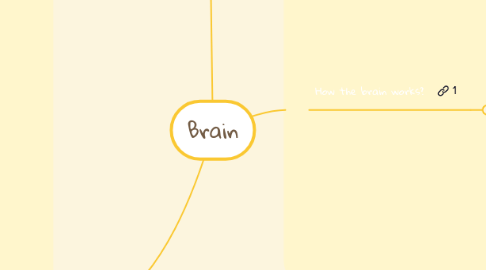
1. Function of the brain?
1.1. Cerebrum
1.1.1. Largest part of the brain.
1.1.2. Responsible for memory, speech, the senses, emotional response, and more.
1.1.3. Divided into several sections called lobes
1.1.3.1. Frontal
1.1.3.2. Temporal
1.1.3.3. parietal
1.1.3.4. Occipital
1.2. Cerebellum
1.2.1. Below and behind the cerebrum
1.2.2. Attached to the brain stem.
1.2.3. Controls
1.2.3.1. motor function,
1.2.3.2. the body's ability to balance,
1.2.3.3. ability to interpret information sent to the brain by the eyes, ears, and other sensory organs.
1.3. Diencephalon,
1.3.1. Inside the cerebrum above the brain stem
1.3.2. Tasks
1.3.2.1. sensory function, food intake control
1.3.2.2. the body's sleep cycle.
1.3.3. Divided into sections.
1.3.3.1. Thalamus
1.3.3.2. Hypothalamus
1.3.3.3. Epithalamus
1.4. Brainstem
1.4.1. Function
1.4.1.1. Respiration
1.4.1.2. Blood pressure
1.4.1.3. Reflexes, and the changes that happen in the body during what is called the “fight or flight” response.
1.4.2. Divided into several distinct sections
1.4.2.1. The midbrain
1.4.2.2. Pons
1.4.2.3. Medulla oblongata.
2. How the brain works?
2.1. The prefrontal cortex
2.1.1. called the thinking brain,which can consciously process and reflect on information
2.2. the lower, automatic brain
2.2.1. called the reactive brain, which reacts to information instinctively rather than through thinking.
2.3. Emotions
2.3.1. Positive
2.3.1.1. We can control what information makes it into our brain. By calming our brain, we can control which sensory data from our environmet our brain lets in or keeps out and influence which information gets admitted to our prefrontal cortex.
2.3.2. Negative
2.3.2.1. When our stress levels are down,so our interest is high, the most valuable information tends to pass into our thinking brain. The brain filters conduct sensory information from the world around us into our reactive brain.
2.3.2.1.1. Will do 1 from 3things
